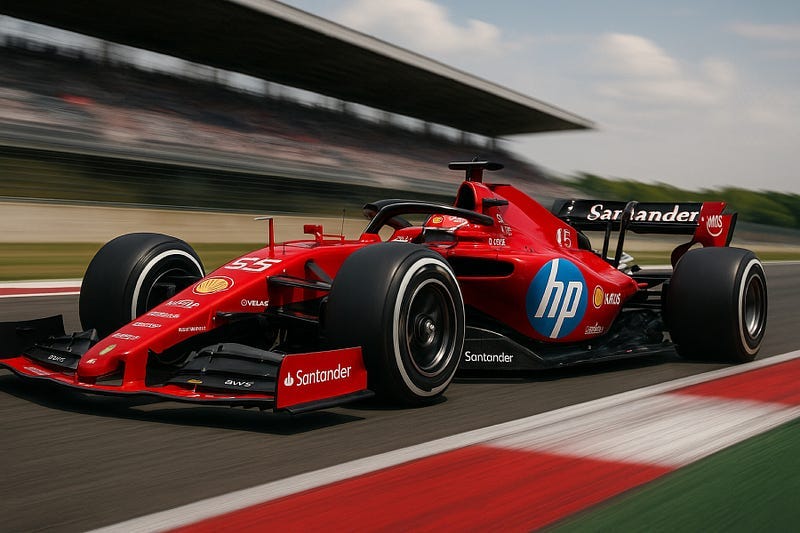No From the Driver’s Seat to the Owner’s Box: Steering the AI Race Team
In my earlier reflections, adopting AI felt like cruising down the highway in a Ford F-150 with BlueCruise, steady, thrilling, and surprisingly autonomous. However, the metaphor needs a tune-up as adoption spreads from individuals to entire organizations.
Welcome to Formula 1.
Because in business, AI isn’t just your co-pilot anymore; it’s your pit crew. The pace is relentless, the competition unforgiving, and every millisecond counts. If you’re leading a team, you’re not just driving. You’re the team owner. And your decisions about when, where, and how to trust your AI agents could win or lose the race.
AI at the track: How McLaren Racing leverages terabytes of data each race for a winning edge
The Car: Your Company at Speed
In this metaphor, your company is the car: a finely tuned machine engineered to perform under pressure. It accelerates based on strategy, customer signals, capital, and execution. However, in today’s market, AI is the upgrade package that everyone is installing.
It’s tempting to treat it like a silver bullet — bolt it on and expect to win races. But just like in F1, not every car with tech wins. Victory depends on integration, regulations, timing, and, most of all, human judgment behind the scenes.
The Pit Crew: Your AI Agents
Modern F1 races are won and lost in the pits. Seconds shaved off during tire changes or fuel adjustments can mean the difference between a podium and the pack. In the same way, AI agents are your operational pit crew, handling tasks like:
Real-time data diagnostics
Strategy optimization
Communication analysis
Performance prediction
Adaptive recommendations
When tuned properly, they operate quickly, sometimes invisibly, and with breathtaking precision.
But if you send your car into the pit without a plan? Or let the pit crew run the race? That’s chaos.
The Driver: Your Teams in Motion
Your teams are still the ones on the track. They feel the friction. They navigate the curves. And they ultimately cross the finish line — or don’t.
When AI is introduced haphazardly, it’s like handing your driver a steering wheel that occasionally steers itself. It’s confusing, risky, and distracting.
But when you orchestrate AI as an extension of the car, not the pilot, you empower your drivers to focus on what humans do best: adapt, intuit, and compete.
You: The Team Owner
As the team owner, your role is not to drive every lap. It’s to build the environment that enables performance:
Choosing the right AI tools (crew members)
Investing in high-quality data (fuel and telemetry)
Setting the strategy (race plan)
Monitoring risk (weather, tires, competitors)
Knowing when to override (red flag conditions)
Most importantly, your job is to ensure everyone knows their role. Confusion between AI and human responsibility is akin to a team owner directing the car’s steering at mid-turn. It ends badly for everyone.
Winning Requires Trust, Timing, and Oversight
You don’t win F1 by hitting cruise control. You win by balancing speed with control, human talent with automation, and split-second intuition with data-driven insight.
The companies winning with AI today aren’t the ones who “let AI take the wheel.” They’re the ones who:
Use AI to shave time off decision cycles, not replace judgment
Deploy agents where humans are weakest, not where ethics or empathy are required
Maintain visibility into every pit stop, ensuring the system’s suggestions are reviewable, explainable, and correctable
Coach their people to become AI-savvy drivers, not disengaged passengers
Final Lap: From First Adopter to Architect
I started this journey hands-on, testing the tools, taking the curves, and learning to trust the process. But that was just the qualifying round. Now, I’m helping build the garage.
Whether you’re just entering the race or already lapping competitors, remember: AI isn’t your driver, it’s your team behind the wall. And the real winners? They’re the ones who never forget the fundamentals: skilled drivers, sharp crew, and a leader who knows when to push and when to pull back.
The race isn’t won at the wheel. It’s won in the design of the whole system.
Own the team. Build the system. Win the race.



